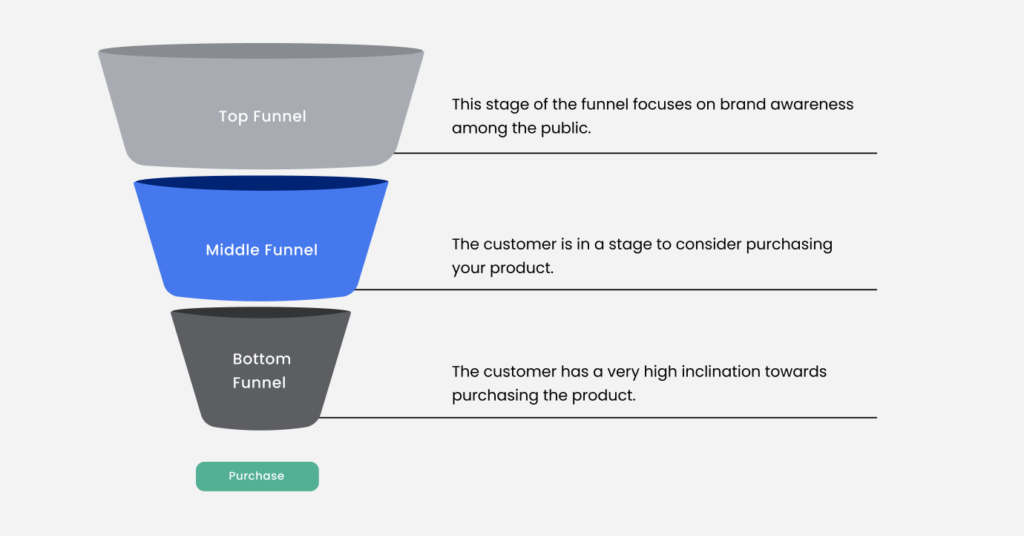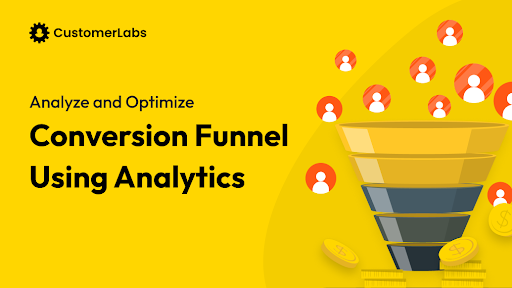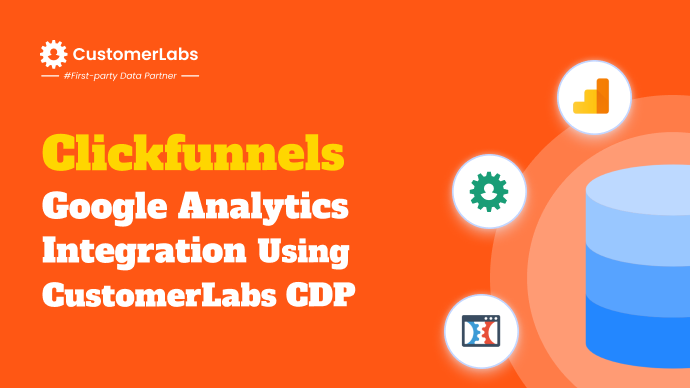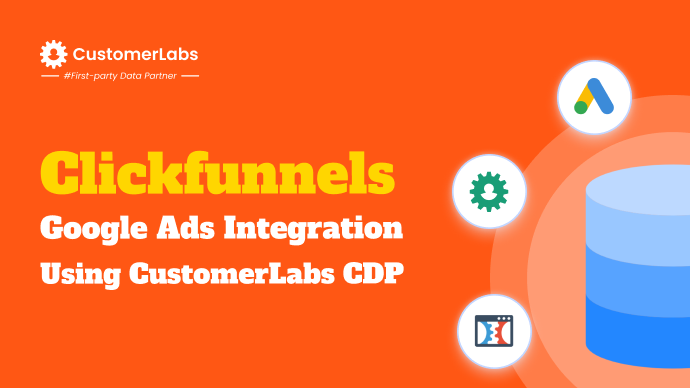Driving higher conversion rates and scaling campaigns efficiently isn’t just about launching ads—it’s about understanding the entire customer journey from first interaction to final purchase. You need complete visibility across every stage of your funnel to identify where prospects engage, drop off, or convert. Without granular insights, optimizing ROAS becomes guesswork, and ad spending gets wasted targeting unqualified leads.
Tracking metrics like click-through rates (CTR), trial-to-paid conversions, and churn rates ensures you stay on top of performance. But surface-level data isn’t enough—knowing which ad drives repeat visits or why users abandon carts halfway is essential. Tools like Google Analytics and CRM integrations help you stitch together fragmented data for deeper funnel insights.
Whether you’re refining mid-funnel strategies with segmented emails or troubleshooting checkout bottlenecks, success depends on continuous tracking and iteration. With the right metrics in place, your funnel transforms into a performance engine—and this guide shows you exactly how to get there. So, let’s get started right away!
What is Funnel Tracking: Role & Importance
Funnel tracking is the process of monitoring and analyzing the path users take from their first interaction with your brand to the final conversion. This process breaks down each stage of the customer journey, allowing marketers to view user actions and engagement across different touchpoints—such as landing pages, ads, and checkout pages.
Funnel tracking plays a crucial role in identifying how users move through various stages of your marketing funnel, from initial contact to conversion. By tracking key touchpoints—like ad clicks, form submissions, and cart additions—you gain real-time insights into where leads drop off and where they convert. Understanding these patterns enables you to fine-tune your funnel for optimized performance, reducing ad wastage and maximizing your return on ad spend (ROAS).
While funnel tracking is essential for understanding customer behavior and optimizing conversions, it’s important to differentiate between the marketing funnel and the sales funnel, as each serves a distinct purpose in guiding prospects through the journey.
Marketing Funnel vs Sales Funnel
While both the marketing funnel and sales funnel track customer journeys, they serve distinct purposes within the broader process of moving prospects toward conversion.
- Marketing Funnel: The marketing funnel focuses on awareness, interest, and consideration stages. It aims to attract leads, educate them about the brand, and nurture interest, preparing them for the sales process. Key metrics in the marketing funnel include website traffic, click-through rates, and engagement levels, offering insights into how well campaigns attract and retain interest.
- Sales Funnel: The sales funnel takes over once a lead is ready to make a purchase decision, covering the consideration and decision stages. This funnel emphasizes lead qualification, conversion, and closing the sale. Sales metrics, such as conversion rates, churn, and upsell potential, are central here, providing insights into the effectiveness of the sales process and revenue generation.
As both the marketing and sales funnels guide leads through distinct stages, tracking engagement and conversion rates becomes essential for evaluating funnel effectiveness. By analyzing how audiences interact at each stage, you gain valuable insights into what drives conversions and where potential improvements lie.
Importance of Analyzing Customer Engagement and Conversion Rates
To make data-driven decisions, it’s essential to monitor key engagement metrics that offer insight into how well your audience responds to your campaigns. Without closely analyzing these numbers, it’s challenging to understand what’s working and where changes are needed to increase efficiency.
Here are some critical ways that engagement and conversion tracking benefit your funnel:
- Identify high-intent touchpoints
Tracking click-through rates (CTR) and bounce rates helps you pinpoint which campaigns and ad creatives attract the most engaged audience. You can use Google Analytics and Facebook’s Conversion API (guide) to align your engagement strategy with audience intent.
- Enhance conversion efforts through segmentation
Tracking customer interactions across your funnel enables smarter audience segmentation. When you understand which users are more likely to convert, you can target them effectively using segmented email marketing or retargeting ads.
- Identify bottlenecks at every funnel stage
Monitoring conversion rates and drop-offs helps you uncover problem areas that might need adjustment. Integrating tools to track cart abandonment provides insights into where users leave without completing a purchase.
Understanding engagement and conversion rates provides a solid foundation for funnel success, yet it’s only part of the equation. To fully optimize the customer journey, it’s crucial to identify and address friction points that hinder progress and lead to drop-offs.
Marketing Funnel: Stages and Metrics for Tracking and Optimization
Tracking specific metrics at each funnel stage is crucial for refining performance and boosting conversions. These metrics deliver actionable insights, helping you identify strengths, target areas for improvement, and prioritize resource allocation for maximum impact. Each stage of the funnel has distinct metrics to monitor, ensuring every step in your customer journey is optimized.

1. Awareness Stage: Website Visitors, Click-Through Rates (CTR), and Marketing Qualified Leads (MQLs)
At the top of the funnel, the goal is to introduce your brand and capture the attention of potential customers. This stage focuses on building visibility and generating curiosity about your offerings.
Key Metrics:
- Website Visitors: Reflects the reach and effectiveness of campaigns in driving traffic.
- Click-Through Rates (CTR): Measures how well your ads or content engage viewers and entice clicks.
- Marketing Qualified Leads (MQLs): Helps identify leads with a higher likelihood of conversion, enabling better focus.
Tools for Tracking: Platforms like Google Analytics or Facebook Ads Manager can provide detailed insights into these metrics, helping refine your approach.
2. Interest Stage: Engagement Rates and Lead Scoring
Here, the goal shifts to engaging your audience and encouraging them to explore your offerings further. Content like blogs, videos, or webinars plays a crucial role in maintaining their interest.
Key Metrics:
- Engagement Rates: Indicators like time on page, bounce rates, and content interaction show how effectively your message resonates.
- Lead Scoring: Assigns values to leads based on their behavior, helping you focus on high-intent prospects.
Why It Matters: Tracking these metrics ensures you are aligning your strategies with your audience’s preferences and readiness to move deeper into the funnel.
3. Consideration Stage: Trial-to-Paid Conversion Rate and Lead Nurturing Metrics
This stage marks a pivotal point where leads actively compare options and evaluate your offerings. The focus is on nurturing these prospects and addressing their concerns.
Key Metrics:
- Trial-to-Paid Conversion Rate: Especially important for SaaS or subscription businesses, this tracks how many free users convert to paying customers.
- Lead Nurturing Metrics: Email open rates, click-throughs, and webinar attendance highlight how well your nurturing tactics maintain interest.
The Goal: Keep your brand top-of-mind while effectively guiding leads closer to making a decision.
4. Decision Stage: Conversion Rates and Drop-Off Analysis
At this stage, prospects are ready to make a purchase or commitment, but friction points can still deter them. It’s crucial to remove obstacles and streamline the path to conversion.
Key Metrics:
- Conversion Rates: A direct indicator of campaign success in turning leads into customers.
- Drop-Off Analysis: Identifies points where prospects abandon the process, like during checkout or form submission.
- Abandoned Cart Tracking: Provides insights into reasons behind incomplete transactions, enabling targeted solutions to reduce abandonment.
Optimization Tip: Addressing common drop-offs with strategies like retargeting or simplifying forms can drastically improve results.
5. Retention Stage: Churn Rate and Customer Lifetime Value (CLTV)
The focus here shifts from acquisition to maintaining and growing customer relationships. Retention not only maximizes the value of each customer but also ensures steady revenue streams.
Key Metrics:
- Churn Rate: Tracks the percentage of customers who stop doing business with you, highlighting areas needing improvement.
- Customer Lifetime Value (CLTV): Assesses the total revenue a customer is likely to generate over their relationship with your business.
Actionable Insight: A strong retention strategy reduces churn and boosts CLTV, ensuring sustainable growth.
By optimizing metrics at every stage of the marketing funnel, businesses can enhance their customer journeys, improve conversions, and drive sustained growth. Continuous tracking and adjustments help maximize performance, ensuring your strategies remain aligned with your objectives.
Now that we’ve explored the key stages and metrics to track within the marketing funnel, it’s crucial to understand how to analyze the data effectively and iterate on your strategies to continuously optimize performance and drive better results.
Analyzing Funnel Reports and Iterating
A data-driven funnel is only as effective as the insights you extract from it. Regular analysis of funnel reports ensures you can identify friction points that may cause potential customers to drop off, allowing you to act quickly and refine your strategies.
Step 1: Regular analysis of reports to pinpoint friction areas
Analyzing key metrics like conversion rates and drop-off points helps uncover problem areas in your funnel.
For example, a sudden drop-off at the payment page may indicate checkout issues, while low CTRs on ads might suggest weak messaging. Tools like Google Analytics provide comprehensive reports.
Step 2: Iterating based on data-driven insights for continuous improvement
Optimization is an ongoing process—each insight should inform your next move. A/B testing results, user behavior analysis, and engagement metrics provide valuable data to fine-tune your funnel.
For instance, iterating on personalized landing pages or adjusting ad targeting can significantly boost conversions. Leveraging insights from abandoned cart reports ensures you continuously optimize weak points.
Step 3: Setting measurable goals and benchmarks to track progress
Clear, measurable goals such as increasing CTR by 5% or reducing churn rate by 10% allow you to track progress effectively.
Establishing KPIs for every funnel stage—from MQL generation to retention—keeps your team aligned and focused on improvements.
By regularly analyzing reports and iterating based on insights, you create a more efficient and conversion-friendly funnel.
Now that we’ve analyzed funnel reports and iterated on strategies, it’s time to focus on optimizing conversion performance at each stage.
Optimizing Funnel Conversion
Maximizing conversion rates within the marketing funnel requires ongoing testing, personalization, and analysis to understand how users interact with each step of the funnel. Every optimization effort should be data-driven, focusing on enhancing user experience and eliminating any friction points.
Here are some effective methods for optimizing marketing funnel conversion rates:
Step 1: Conduct A/B Testing to Improve Conversion Rates
A/B testing is crucial for identifying which elements of your marketing funnel lead to higher conversion rates. By running tests with different versions of your web pages, emails, or ads, you can understand which variations drive better results.
Actionable A/B Testing Tips to Improve Conversion Rates:
Landing Pages:
- Headline: The headline is one of the first things users see. Test variations that highlight benefits or address pain points. For instance:
- “Streamline Your Marketing with Reliable Software”
- “Transform Your Strategy with a Powerful Tool”
- Subheadlines: Use different angles to see which resonates better. Focus on benefits like “Faster Execution, Less Effort” or highlight a pain point, e.g., “Say Goodbye to Confusing Platforms.”
- Call-to-Action (CTA): Experiment with different CTA text, button colors, or placement to see what motivates action.
- Copy Length & Style: Test the effectiveness of shorter vs. longer copy and different formatting styles like bullet points vs. paragraphs.
- Visuals: Test different types of visuals (e.g., images, videos, or GIFs) to see which format engages your audience best.
Checkout Pages:
- Headline Variations: Instead of a generic “Checkout” label, test phrases like “You’re one step away from placing your order.”
- Layout and Structure: Try different checkout page designs (e.g., two-column vs. multi-step processes) to see which reduces distractions and increases conversions.
- Button Text and Design: Small changes, like switching “Place Order” to “Order Now,” can drive urgency and improve conversion rates.
- Social Proof and Trust Badges: Add elements like customer reviews or trust badges to the page to see if they increase confidence and conversions.
Offer Pages:
- Hero Section Design: Test different headlines, imagery, or layouts to see which grabs the most attention.
- Content Style: Experiment with different formats such as a video sales letter or long-form content to see what keeps visitors engaged.
- Product Information: Test different types of product information (e.g., social proof vs. feature highlights) to determine which increases conversions.
By using platforms like Google Optimize, you can run these A/B tests easily and integrate the results into your marketing strategy to keep adapting to user preferences.
Step 2: Use Interactive Walkthroughs and Personalized Experiences
Interactive walkthroughs and personalized experiences can significantly improve user engagement within the marketing funnel. These tools guide users through the process step by step, helping them understand how to use your product or service more effectively.
Examples include:
- Asana: Provides a walkthrough for new users on creating tasks, assigning members, and setting deadlines.
- Shopify: Guides first-time sellers through the process of setting up their store and connecting payment options.
- Canvas: Offers instructors an interactive guide on how to create courses, add modules, and manage grades.
These walkthroughs can ease new users into your funnel, reducing friction and helping them quickly understand the value of your offering.
Step 3: Monitor User Interactions for Insights Into Behavior
Understanding user behavior through tools like heatmaps, session recordings, and click paths is essential to identifying where users drop off or get stuck in your funnel.
Monitoring Tools:
- Heatmaps: Platforms like Hotjar or Crazy Egg can show you where users are clicking, scrolling, and spending time on your pages, highlighting areas of interest and friction points.
- Session Recordings: These provide visual insights into how users move through your funnel, allowing you to identify unexpected behaviors or obstacles that may prevent conversions.
- Click Paths & User Journeys: Use Google Tag Manager to track specific user interactions like button clicks or form submissions, providing insight into common drop-off points.
- Funnel Analytics: Set up custom funnel reports in Google Analytics to track how users progress through each stage and identify where they abandon the process.
By analyzing this data, you can pinpoint bottlenecks—whether it’s on the landing page, checkout process, or any other stage—and take action to streamline the user experience, improving overall conversion rates.
Identifying and Addressing Friction Points
Once you’ve gathered data from user behavior tools, it’s time to address friction points. For example:
- Drop-offs at Checkout: If users abandon their carts at checkout, consider simplifying the process by offering a guest checkout or reducing the number of required fields.
- Low Engagement on Certain Pages: Test variations of the page content, CTAs, or visuals to keep users engaged longer.
Optimizing the marketing funnel is an iterative process. Each adjustment should be informed by data, and testing should be ongoing to ensure continuous improvement in conversion rates.
Let’s now explore best practices for analyzing funnel metrics to effectively track and improve your marketing performance.
Best Practices for Funnel Metrics Analysis
Effective funnel metrics analysis requires a strategic approach that aligns with your business goals and adapts to changing market dynamics.
Defining and aligning KPIs with business objectives
Setting clear KPIs ensures your metrics reflect meaningful outcomes. For example, tracking lead conversion rates and customer lifetime value (CLV) aligns with goals like revenue growth and retention. This alignment ensures that every action taken contributes to your overarching business objectives.
Continuous monitoring and adaptation to market changes
Regularly reviewing metrics enables you to respond swiftly to shifting trends, ensuring your funnel remains optimized. Whether it’s adjusting campaigns during seasonal spikes or refining strategies after updates like Google’s enhanced conversions, continuous monitoring keeps your efforts relevant.
Leveraging CRM and Analytics Platforms
Tools like Google Analytics help you track user behavior, such as how visitors navigate your website and where they drop off. Microsoft Power BI helps you create custom visualizations that reveal hidden trends in your data. For example, Power BI can help you analyze the lifetime value of customers by tracking multiple metrics over time. Together, these tools ensure you have both broad and granular views of your funnel performance.
Funnel Step Analytics
Tools like Mixpanel or Heap Analytics are designed to track user journeys across every step of the funnel. These tools help you understand where users abandon carts or how they interact with your content. Understanding such behaviors helps you make informed tweaks to your funnel, such as optimizing your checkout process or simplifying navigation.

Segmented Email Marketing and Retargeting
Email marketing remains one of the most effective ways to nurture leads. Email marketing remains one of the most effective ways to nurture leads. Using segmented lists, you can send personalized emails based on users’ current stage in the funnel.
According to a report by Mailchimp, segmented email campaigns see a 14.31% higher open rate and a 100.95% higher click-through rate than non-segmented ones. Combine this with retargeting ads on platforms like Facebook or Google Ads to keep your brand top-of-mind for leads who didn’t convert.
By using these tools and strategies, you can stay on top of your funnel, address drop-offs, and create a seamless path to conversion for your users.
Conclusion
Tracking and optimizing your funnel is essential to improving conversions, reducing drop-offs, and maximizing your ROAS. With the right metrics in place—such as click-through rates, lead conversions, and churn rates—you can pinpoint friction points and refine strategies at every stage. By continuously analyzing reports, setting clear KPIs, and iterating based on insights, your funnel transforms into a powerful engine that drives sustainable growth.
To take your funnel tracking efforts even further, a 1PD Ops platform can provide the unified data foundation you need. With a 1PD Ops platform like CustomerLabs, you can integrate data from multiple sources, build detailed customer profiles, and activate real-time campaigns based on funnel interactions. It enables you to track both online and offline touchpoints seamlessly, improving attribution and audience segmentation. If you’re looking to align your funnel tracking with first-party data strategies, World’s first 1PD Ops platform offers the tools to deliver deeper insights and higher conversions effortlessly.
Explore how CustomerLabs can elevate your funnel tracking and optimization. Book a demo.





